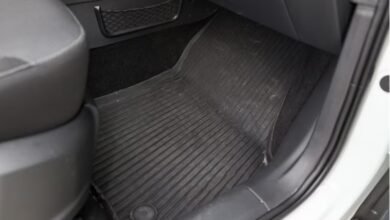How Long Should Car Wax Last?

Maintaining your vehicle’s exterior in top condition isn’t just a matter of pride. Wax performs a crucial function: protecting automotive paint and finishes against the elements. If you’re like other vehicle owners, you probably wonder, “How long should car wax last?” Keep reading to find out the answer plus other helpful tips about waxer, buffer, and polisher products.
Benefits of Car Wax
Whether you’re a new vehicle owner or experienced in auto care, the benefits of waxing the exterior cannot be overstated. Wax creates a protective layer that shields the finish against damage from several kinds of environmental hazards:
- Air pollution contains compounds that may lead to fading, dulling, and overall damage to a vehicle’s finish.
- Bird droppings contain acid and particles that can cause paint etching, making the finish rough or pitted.
- Road salt has oxidative and corrosive properties that can affect metal and undermine the integrity of automotive paint.
- Tree sap hardens over time, making it challenging to remove without damaging a vehicle’s finish.
- Ultraviolet rays cause oxidation and molecular breakdown in vehicle paint, leading to dulling, fading, and deterioration.
Most types of automotive wax contain carnauba wax, produced by Brazilian palm trees to shield their leaves from dehydration. Because of its unique function, carnauba wax exhibits special protective properties that benefit automotive finishes: glossiness, high melting point, hard consistency, and waterproofing. With its brittle nature, however, carnauba wax is often blended with synthetic waxes for improved durability and application.
Application and Longevity
The amount of time your car wax lasts depends on the formula you use and environmental factors. Traditional waxes usually offer protection for around three to six months. However, ceramic-based formulas may shield your vehicle’s finish for up to 12 months.
Correct application is also key to getting the most benefits from car wax. A high-quality polisher and buffer can save time and effort while creating an attractive and functional protective layer. Paired with superior-grade polishing and buffing pads, your polisher and buffer tool can make quick work out of an afternoon waxing project.
When finished with your wax application, park your vehicle in a clean, cool, and dry place such as a garage or a shaded area. Besides letting the wax cure properly, this also shields it from bird dropping, leaves, water, and other elements that can ruin its finish.
Other Important Tools and Tips
After your vehicle’s wax layer has cured, you can maintain its integrity in several ways. Regular washing removes built-up dirt and debris that could break down the wax. Using a non-detergent soap, wash your vehicle at least biweekly. During summer or winter when dirt and road salt can accumulate, you may need to wash your vehicle weekly. Once you’ve washed your vehicle, dry it with a clean and soft microfiber towel.
Other tools and practices can help you keep the finish in the best possible condition. Keep scratch remover handy to take care of surface imperfections. Applying it with your polisher and buffer can speed up the process and give you high-quality results. No matter what car care tools and supplies you need, choose them from a reputable aftermarket parts and accessories retailer.





